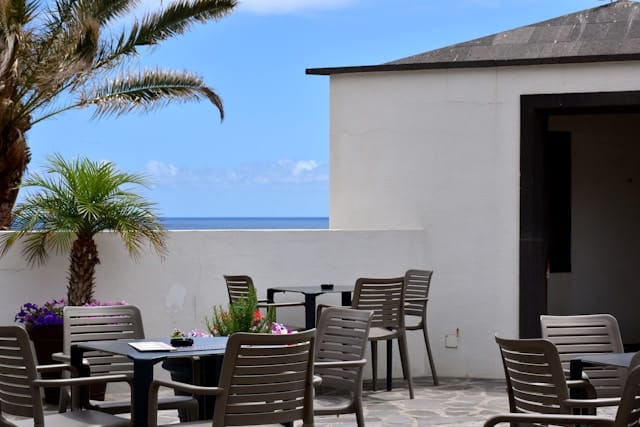What Are the Best Strategies for Creating a Visually Cohesive Flow in Open-Plan Homes?

In the sphere of interior design, open-plan living is synonymous with a modern, airy, and free-flowing space. Increasingly popular, these room layouts are recognized for their ability to create a sense of togetherness and a seamless transition from one area to the next. However, designing these spaces can prove to be a challenge, especially in ensuring a consistent style and flow. How do you maintain a cohesive theme throughout your open-plan home without it feeling too monotonous? Here, we delve into the best strategies to achieve a visually cohesive flow in open-plan homes.
Choosing the Right Color Scheme
The color scheme you choose for your open-plan home is the backbone of the design. This decision will guide the selection of your furniture, décor, and fabrics. It is also the most effective way to create a consistent flow from one space to another.
Lire également : How to Plan a Kitchen Layout That Encourages Family Collaboration in Cooking?
A neutral base color is often a great choice for open-plan spaces. It allows the areas to merge seamlessly, and it provides an excellent canvas for further design elements. From there, you can then choose one or two accent colors to bring in through your furniture, rugs, and accessories. This approach will add depth and interest to your space without disturbing the overall flow.
The use of color can also help to define different areas within your open-plan layout. For instance, you could paint the wall behind your dining table in a bold accent color, creating a clear differentiation between the dining and adjacent living areas.
A lire en complément : What Are the Benefits and Challenges of Installing Floor Heating in a Renovated Cottage?
Furniture Placement and Selection
Furniture plays a crucial role in defining spaces and contributing to the overall cohesion in open-plan homes. The way you arrange your furniture can create a visual separation between different areas without the need for walls.
Consider the flow of movement. Ensure there are clear paths for walking, and avoid placing furniture in a manner that would obstruct the flow. Use rugs to define individual spaces, such as the living room or dining area. Place large furniture pieces, like sofas and tables, in a way that they face or flank the open areas.
The style of furniture you select is equally important. Stick to a consistent design style throughout the space. If you choose a modern minimalist style, continue with that design in all areas of the open-plan home.
Managing Floor Levels and Materials
Playing with floor levels and materials is another effective strategy for creating a visually cohesive flow in open-plan homes. This method can help create subtle divisions between rooms while maintaining an open atmosphere.
For example, a small step or difference in floor level can distinguish the living room from the kitchen. Alternatively, changing the flooring material between spaces can also create a clear yet unobtrusive boundary.
Remember, though, consistency is key. If you choose hardwood for the living area, incorporate wood elements in the kitchen or dining space as well. This will create a harmonious flow between the rooms.
Lighting as a Design Tool
Lighting shouldn’t be an afterthought in your open-plan home design. Instead, it should be a fundamental part of your strategy to create a visually cohesive flow.
Light fixtures can act as a focal point or conversation starter in a room, drawing the eye and making a statement. Consistency in style, color, or shape of lighting fixtures throughout can unify the different areas.
By varying the intensity and color temperature of the light in different areas, you can also subtly differentiate between spaces. Dim, warm light might suggest a relaxing, intimate living area, while brighter, cooler light could indicate a functional, active kitchen.
Including Greenery and Natural Elements
Incorporating greenery and natural elements in your open-plan home can significantly enhance the sense of flow and cohesion. They provide a connection to the outside world, bringing in a sense of freshness and vitality.
Placement is vital. You could use large potted plants to create a soft barrier between the kitchen and living room. Smaller plants can sit on shelves or tables, tying together the design of the space.
Consider using similar or the same species of plants throughout the space to maintain consistency. Alternatively, use the same type of planter or pot in different areas to create a visually cohesive look.
In conclusion, creating a visually cohesive flow in open-plan homes can be achieved with careful planning and strategic design decisions. Through the thoughtful use of color, furniture, flooring, lighting, and greenery, you can create a space that is both stylish and functional.
The Role of Natural Light and Window Treatments
The presence and manipulation of natural light can greatly influence the atmosphere in your open-plan home, and it’s a critical design element. Proper use of natural light can help to establish a bright, airy feel that amplifies the effect of an open concept layout.
Consider the positioning of windows and skylights, and the directions they face. The amount of natural light entering your home can change throughout the day, affecting the overall ambiance. South-facing windows, for instance, will often allow more light in during the day than those facing north.
Window treatments, such as blinds, curtains, and shades, also play a significant role in controlling the natural light in your space. Choosing the right window treatments can manage the light, enhance privacy, and contribute to the color scheme and overall design aesthetic. Transparent or semi-transparent curtains, for instance, can maintain the flow of light while providing a degree of privacy, while darker, heavier curtains can add dramatic flair and provide full privacy when needed.
A consistent selection and usage of window treatments across your open floor plan will help the visual flow. For instance, using the same style or color of curtains in your living room and dining room can create a cohesive design.
Incorporating Art and Accessories
Artwork and accessories add the finishing touches to your open-plan design. These items can serve as focal points, conversation starters, and vehicles for personal expression. They can also further emphasize your chosen color palette and design scheme.
When selecting art and accessories, consider their scale and proportion in relation to the space and other design elements. Large-scale art pieces or sculptures can make a bold statement and define a particular area within your open plan layout. Smaller accessories, on the other hand, can be used to create cohesion by repeating colors, textures, or styles found in other areas of the home.
Arrangement is also key. Grouping similar items together can create a sense of unity and order. Additionally, repeating the same or similar types of accessories in different areas of your home can contribute to a cohesive, unified look.
Remember, your open concept home should reflect your personal taste and lifestyle. Use art and accessories to inject your personality into the space, making it truly your own.
Conclusion
Creating a visually cohesive flow in open-plan homes requires a careful balance of consistency and variety. From the selection of a harmonious color palette to the arrangement of furniture and the choice of floor plans, every decision contributes to the overall aesthetic and function of the space. Incorporating natural light, art, and accessories further enhances the cohesion and personalization of the space. By following these design tips, you can transform your open floor plan into a stylish, comfortable, and cohesive home that seamlessly blends function and design.
